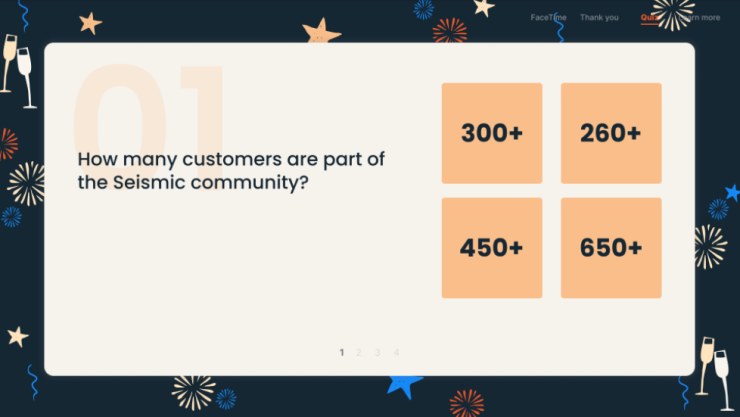With in-person meetings, events and activities still mostly on hold, digital channels are more important than ever for financial advisors to find new clients.
Although 2020 forced many advisors to
“Advisors' emails often get lost in the crowd,” Baxter says. “Most people are overloaded with information. Breaking through the clutter and being highly relevant to prospects and clients is one of the biggest challenges advisors face.”
The key is personalization. Personalized marketing at scale can reduce acquisition costs by as much as 50%, lift revenues by as much as 15% and increase the efficiency of marketing spend by as much as 30%, according to
“Personalized content marketing at scale” is great for filling spaces on
My favorite example is Spotify Wrapped, a digital, interactive package that the music and podcast streaming service sends to each of its 144 million users in early December,
Spotify Wrapped highlights each customer’s favorite artists, podcasts, songs and genres of music for the previous year. It offers quizzes about their listening habits, automatically generates a playlist of the person’s top 100 tracks and provides insights on how they compare to other listeners. I was apparently in the top 1% of Jay-Z listeners in 2020.
The question is: Could financial advisors ever pull off something similar?
What if instead of a boring old annual report, each client could receive a visually engaging recap of their account holdings, investment performance, progress towards financial goals and a look at how they compare to their peers? If they take advantage of account aggregation, their “Portfolio Wrapped” could even include insights about spending and savings habits, and suggestions for how to improve in the new year.
It is entirely possible for advisors to offer such an annual review today and it doesn’t take the resources of a tech company like Spotify to pull it off. There are products on the market to help advisors pull it off, says Bill Finnegan, managing director of financial services marketing at technology firm Seismic.
“This is not about restrictions of technology,” Finnegan says. “What you’re dreaming is available.”
Seismic sent a New Year’s message to its own clients, which include financial services firms like T. Rowe Price and Allianz, built with a microapp that offered an interactive quiz on the company’s growth in 2020. Advisory firms could use microapps to build unique messaging to clients.

“[Client] presentations are now interactive and dynamic … Incorporating a more personal look and feel,” Finnegan says. “And it is all available today, though maybe not as robust as Spotify’s.”
Emily Phillips, a financial advisor with Drosner Phillips Ristau Group, says she tries to add culture and lifestyle using YouTube videos and social media to make client outreach more humours and personalized than conventional end-of-year wrap-ups. The approach has helped build better relationships with clients, who enjoy getting to know their advisor on a personal level, Phillips says.
“If you’re going to entrust your portfolio to someone, you want to know what they’re like behind the charts and financial plans and the advice that they give,” Phillips says. “People may not need to know your politics or religion, but at the end of the day they want to know that you’re a decent person.There’s opportunity in that to create a stronger bond.”
It seems to be a huge success for Spotify. Since it began in 2015, the annual Spotify Wrapped is one of the best parts of the holiday season for some music fans. Though the company did not respond to a request for comment on just how popular the feature is, the hashtag #SpotifyWrapped was a top trending topic on social media in early December as users, celebrities, musicians and media outlets all shared their listening stats.
Phillips’ team manually creates her digital end-of-year presentations, but technology could automate the production and make it even easier to send to more clients. Phillips says “it would be a dream” if an AI program could collect clients notes from a CRM and relevant social media posts to combine them all automatically with reports on investment performance and cash flow.
With much of that technology already available and the SEC finally
All that’s left is firms’ willingness to invest in the technology to make it possible.








